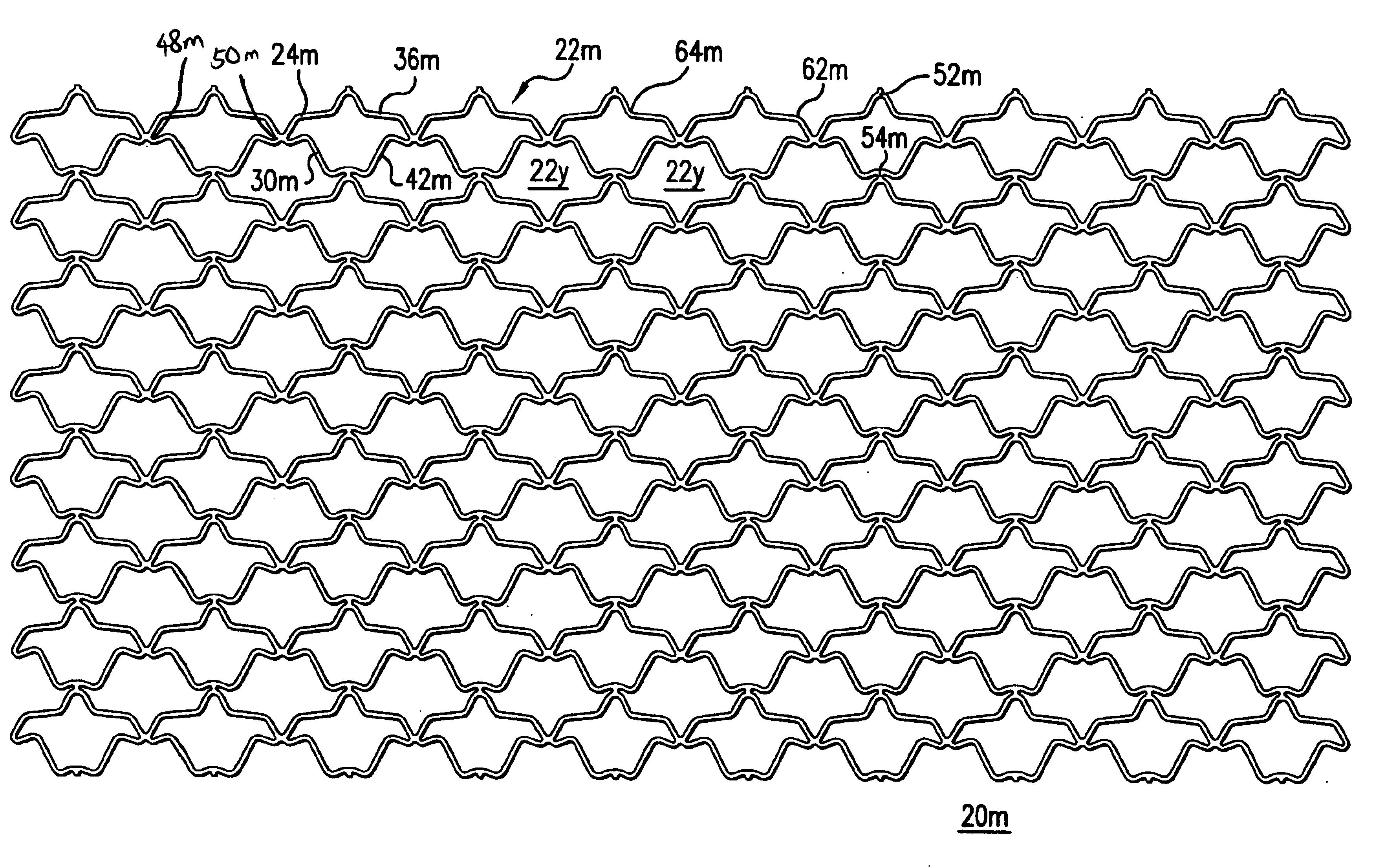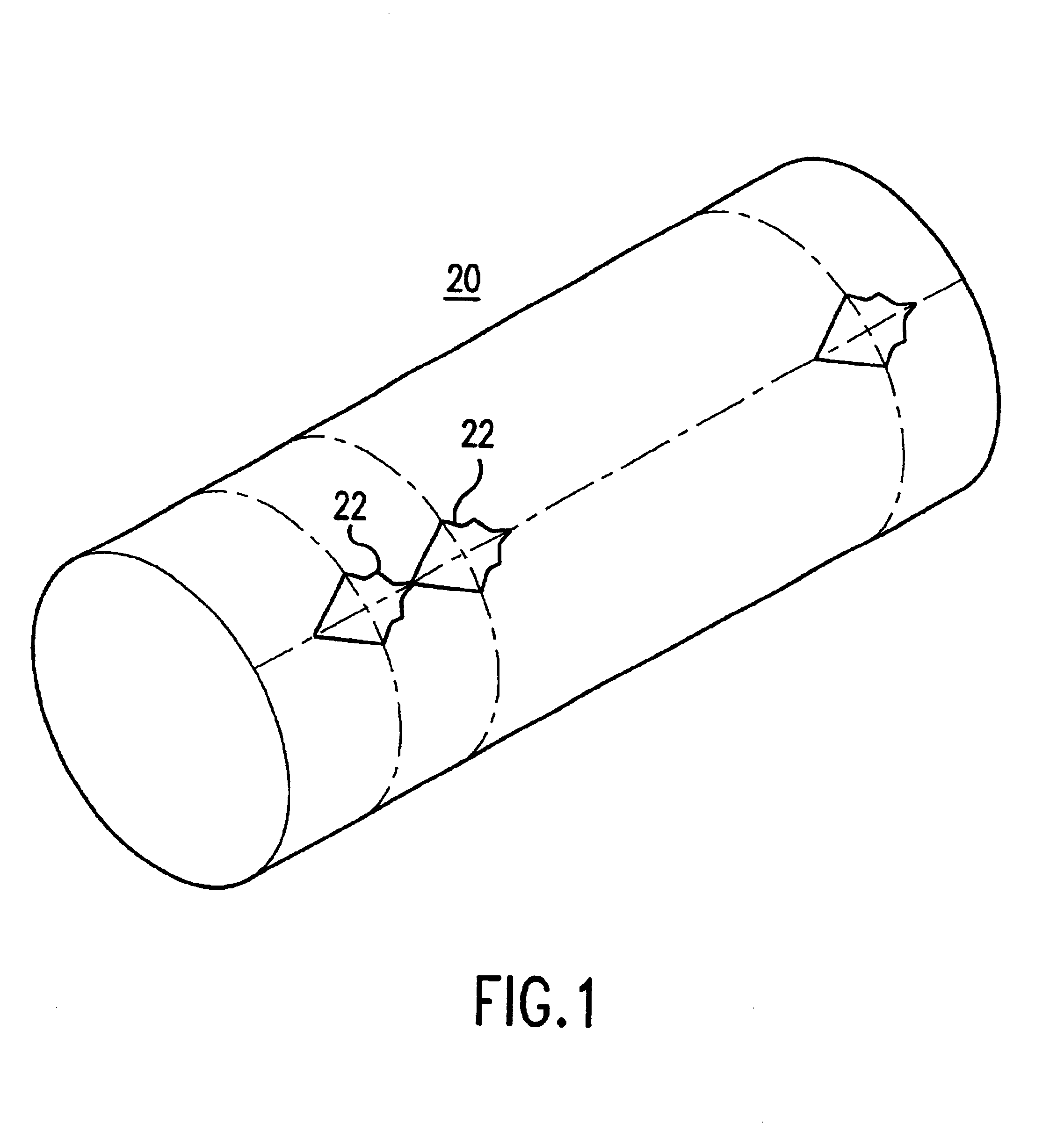Non-foreshortening intraluminal prosthesis
a prosthesis and non-foreshortening technology, applied in the field of intraluminal prosthesis, can solve the problems of stent breakage, dislocation of the lumen of the stent, etc., and achieve the effect of facilitating accurate sizing and deployment, and reducing the time needed for medical procedures
- Summary
- Abstract
- Description
- Claims
- Application Information
AI Technical Summary
Benefits of technology
Problems solved by technology
Method used
Image
Examples
Embodiment Construction
[0033]The following detailed description is of the best presently contemplated modes of carrying out the invention. This description is not to be taken in a limiting sense, but is made merely for the purpose of illustrating general principles of embodiments of the invention. The scope of the invention is best defined by the appended claims.
[0034]The intraluminal prosthesis according to the present invention is a stent, although the principles of the present invention are also applicable to other prosthesis such as liners and filters. The stent is delivered to a desired location in the lumen of a body vessel in a compressed state, and is then deployed by expanding it to its expanded state. The stent maintains substantially the same length in both its fully compressed and fully expanded states.
[0035]The stent according to the present invention can be a self-expanding stent, or a stent that is radially expandable by inflating a balloon or expanded by an expansion member, or a stent tha...
PUM
 Login to View More
Login to View More Abstract
Description
Claims
Application Information
 Login to View More
Login to View More - R&D
- Intellectual Property
- Life Sciences
- Materials
- Tech Scout
- Unparalleled Data Quality
- Higher Quality Content
- 60% Fewer Hallucinations
Browse by: Latest US Patents, China's latest patents, Technical Efficacy Thesaurus, Application Domain, Technology Topic, Popular Technical Reports.
© 2025 PatSnap. All rights reserved.Legal|Privacy policy|Modern Slavery Act Transparency Statement|Sitemap|About US| Contact US: help@patsnap.com



